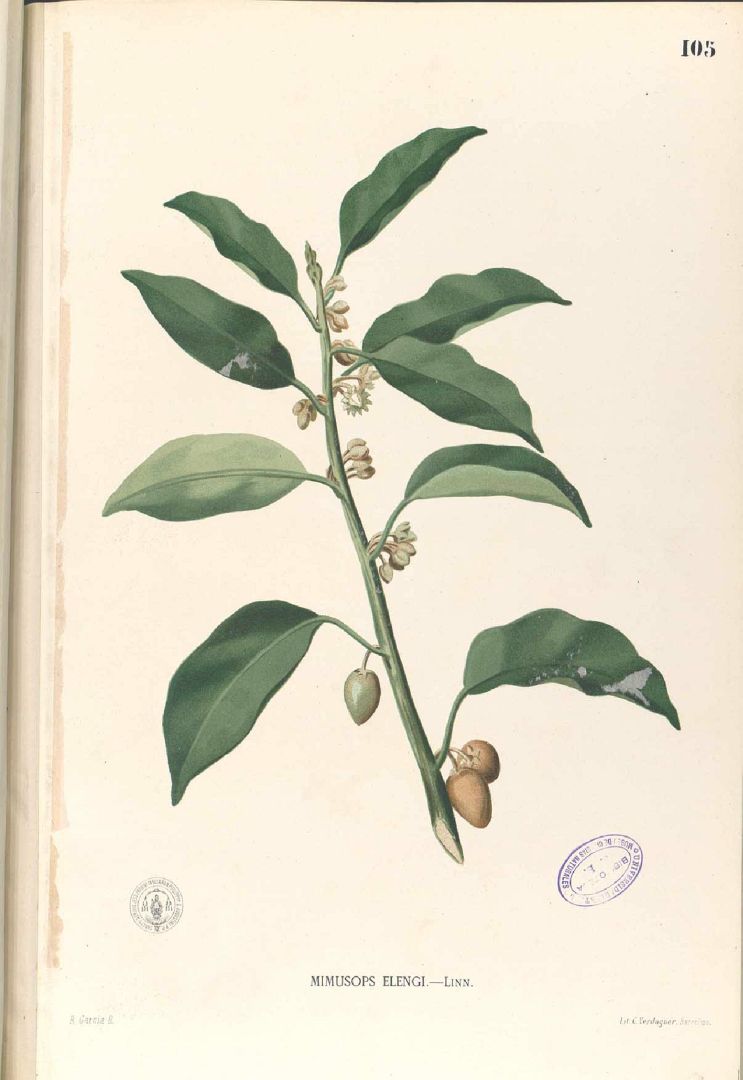! Nouveau site ici !
Vita > Plantae > Magnoliophyta > Magnoliopsida > Ebenales >
Sapotaceae > Mimusops
Mimusops elengi
(Cerisier espagnol)

 | *** - **
| *** - **
Vita > Plantae > Magnoliophyta > Magnoliopsida > Ebenales >
Sapotaceae > Mimusops
Mimusops elengi
(Cerisier espagnol)

Un grand arbre. Il pousse de 10 à 15 m de haut. Il a un grand tronc. La couronne est dense et en forme de parapluie. Il s'étend sur 5 à 15 m de diamètre. L'écorce est rugueuse et dure et gris foncé. L'éc... (traduction automatique)
→suite
⬀
Le  donne accès au menu
donne accès au menu (c'est votre point de repère) 😊 ;
En dessous vous avez la classification, à partir de la vie (Vita, premier rang) jusqu'à la classe au dessus de la plante, dont vous trouvez ensuite le nom scientifique/botanique (latin) puis le nom commun (français), le cas échéant ;
C'est aussi un lien vers la fiche complète (tout comme la ✖, en bas à droite, et le +, en dessous de la description) ;
Vient alors l'illustration (ou ce qui la remplace, en attendant), la comestibilité :
Et en bas
⬂



